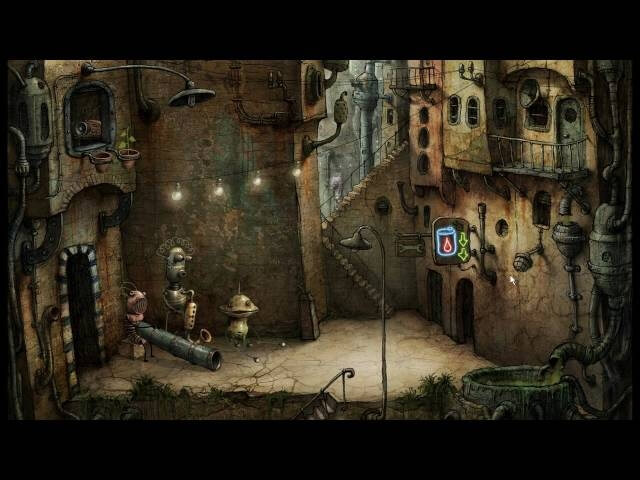Graphic adventure games

Why it’s daunting: Though they once ruled the software sales charts, graphic adventure games endured near-extinction for most of the 2000s. That makes many of the genre’s classic games hard to track down. Fortunately, graphic adventure games are having an unlikely renaissance in this era of browser-based Flash games and indie creations, though seeking out the best of them may still take some work. Broadly speaking, a graphic adventure game is any game where the player controls a character through a tightly told, usually linear storyline, often helping that character out by solving puzzles. Usually, these puzzles will take the form of logic games or will involve using items the player encounters along the way (and places in an “inventory”) in ways that will clear obstacles and help the storyline advance. The best games in the genre balance well-told stories and well-developed characters with a sense—no matter how false—that the player is helping that story progress and helping the lead character develop. Good puzzle design certainly helps, but for many adventure gamers, the story’s the thing.
The problem with getting into adventure games comes from the sheer wealth of games out there—the genre was born in 1980 with Mystery House, a murder mystery carried out on several crudely drawn screens—and the fact that most of the games from the genre’s golden era (roughly the late ’80s through the early ’90s) are unplayable on modern machines. Since PCs have moved from the MS-DOS operating system to Windows-based systems, most older games (written for DOS) simply won’t run without massive tinkering underneath the hood. And though there are emulators designed to trick newer computers into behaving like machines from the ’90s, most of these programs are the exact opposite of user-friendly, particularly if you have no experience working in DOS.
But in the last five years, there’s been a shift toward making adventure games a going concern again, and expanding their audience beyond a fervent cult. To that end, sites like Steam or Good Old Games, as well as software collections designed to bundle any number of these older games together into one package, build the emulation software into the game itself, so clicking on the icon in Windows automatically tricks your computer into living like the first George Bush is president and the Buffalo Bills are an AFC powerhouse again. And that’s to say nothing of the many, many new, good adventure games that have landed in the past several years, many of which will play right inside your browser window.
Possible gateway: Machinarium
Why: Much of the adventure renaissance of the last five years has been driven by European studios that are designing games to fill the desire for more adventure titles on that continent (particularly in Germany). Machinarium isn’t the best of these titles, but it’s easily the most accessible and easiest to get a hold of. Created by Czech studio Amanita Design, Machinarium is a whimsical tale of a robot who longs to save his robot city from an at-first-unspecified menace. The game’s storyline is rather simplistic, but it’s excellent both at conveying what the player must accomplish to move forward in the game and at offering hints at how that might be pulled off. More experienced adventure gamers may well find themselves blowing through Machinarium in an hour or two, but for the new player, the game will provide the right balance of intriguing story, fun characters, and just-challenging-enough puzzles. As a bonus, the whole thing is available on a number of platforms, including as a browser-based game, and for a reasonable price.
Next steps: From there, the best next step would be to explore some of the classic adventures of the genre’s golden era, particularly those from the genre’s two heavyweights, LucasArts and Sierra On-Line. New players should be forewarned that older games are much less forgiving than newer ones. The next steps won’t always be apparent, solutions to inventory-based puzzles may often seem nonsensical, it’s possible to reach narrative dead-ends in some games, and death will lurk around every corner (especially in Sierra games). The old maxim of saving early and saving often applies in particular to older adventure games, and newer players may wish to use online walkthroughs until they get the hang of how “adventure game logic” works.








![Rob Reiner's son booked for murder amid homicide investigation [Updated]](https://img.pastemagazine.com/wp-content/avuploads/2025/12/15131025/MixCollage-15-Dec-2025-01-10-PM-9121.jpg)

























![HBO teases new Euphoria, Larry David, and much more in 2026 sizzle reel [Updated]](https://img.pastemagazine.com/wp-content/avuploads/2025/12/12100344/MixCollage-12-Dec-2025-09-56-AM-9137.jpg)





